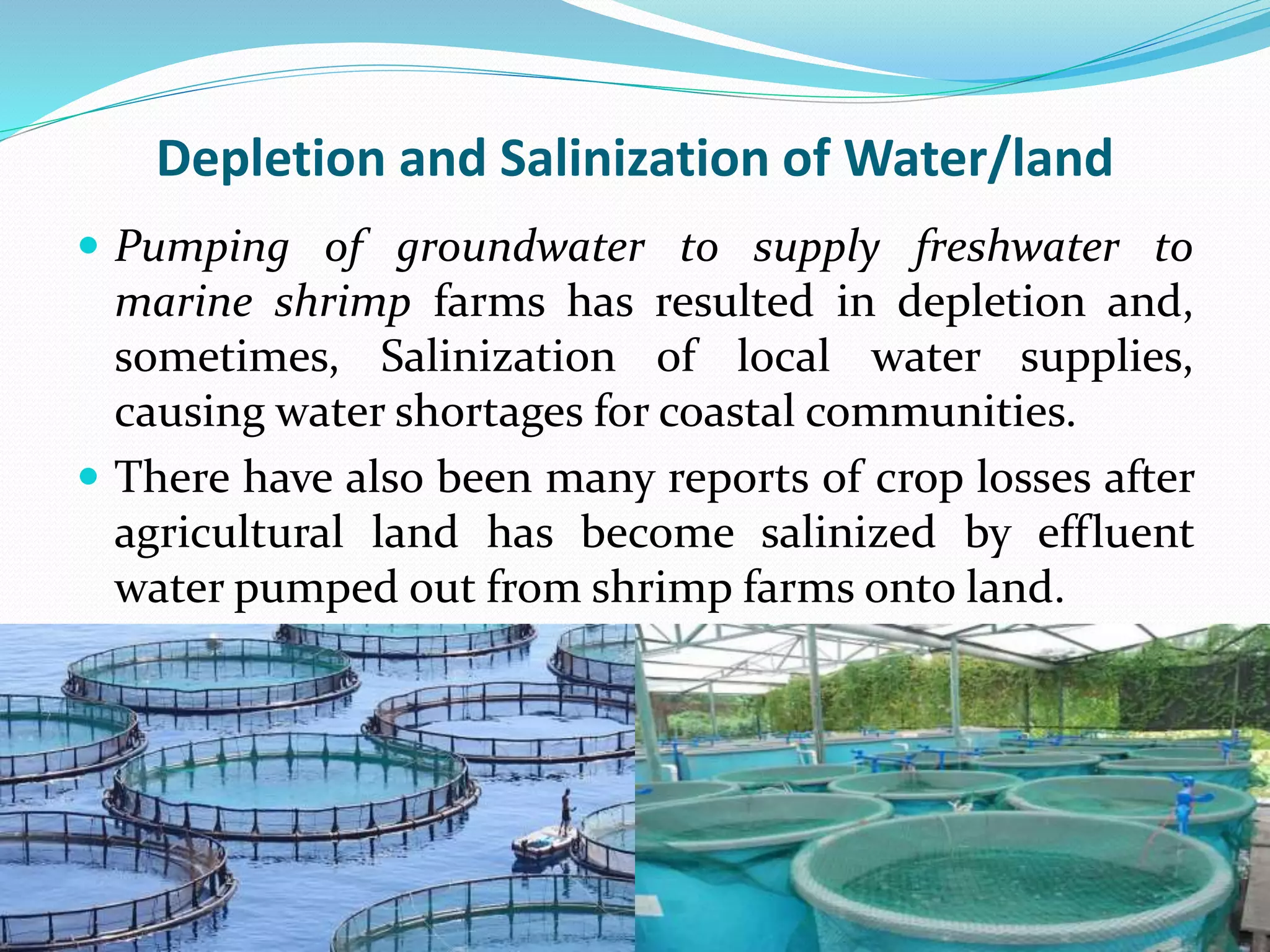This document discusses the environmental impacts of agriculture and aquaculture. It notes that while farming can help environments when sustainably practiced, unsustainable practices pose major threats. Key impacts include habitat loss from land conversion, wasteful water consumption, soil erosion, various forms of pollution, contributions to climate change, and loss of genetic diversity. For aquaculture, the document outlines impacts such as destruction of habitats, overexploitation of wild juveniles, water depletion and salinization, disease issues, waste impacts on water quality, and effects of escaped farmed fish.










































